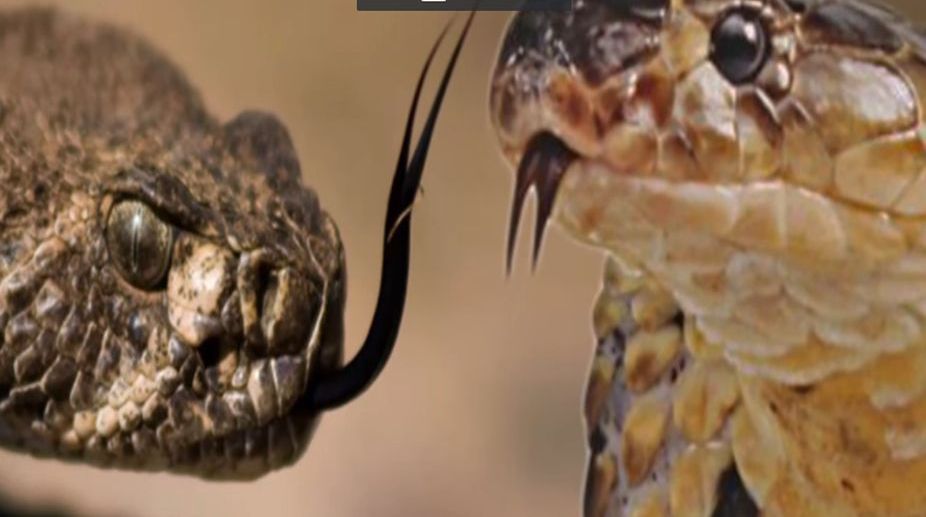Nora Fatehi and Jason Derulo unveil new track ‘Snake’
Dance floors are heating up with Nora Fatehi and Jason Derulo’s 'Snake', a cross-cultural track showcasing Nora’s vocals and signature belly dancing.

Representational Image (Photo: Youtube)
Snakes, long thought to be solitary eaters, coordinate their hunts to increase the chances of success, a new study has found.
Researchers from the University of Tennessee (UT) in the US observed the Cuban boa – the island nation's largest native terrestrial predator – in bat caves for the study.
Advertisement
Many Cuban caves shelter large bat colonies, and in some of them small populations of boas regularly hunt the bats as they fly out at dusk and return at dawn.
Advertisement
Researchers noticed that the boas hung down from the ceiling of the cave entrance and grabbed passing bats mid-air.
They found that if more than one boa was present, the snakes coordinated their positions in such a way that they formed a wall across the entrance.
This made it difficult or impossible for the bats to pass without getting within striking distance of at least one boa.
Such group hunts were always successful, and the more snakes were present, the less time it took each to capture a bat. However, if there was only one boa, it sometimes failed to secure a meal.
"To date, only a handful of snakes have been observed to hunt in groups, and coordination among them – or among any other group-hunting reptiles – has never been proven," said Vladimir Dinets, assistant professor at UT.
Only a few of the world's 3,650 snake species have ever been observed hunting in the wild, so very little is known about snakes' diverse hunting tactics.
"It is possible that coordinated hunting is not uncommon among snakes, but it will take a lot of very patient field research to find out," Dinets said.
He added that observing the Cuban boa, although an amazing spectacle, is becoming increasingly difficult since only the most remote caves still have boas. The boas are being hunted for food and possibly pet trade.
"I suspect that if their numbers in a cave fall, they can't hunt in groups anymore and might die out even if some of them don't get caught by hunters," Dinets said.
The findings were published in the journal Animal Behavior and Cognition.
Advertisement